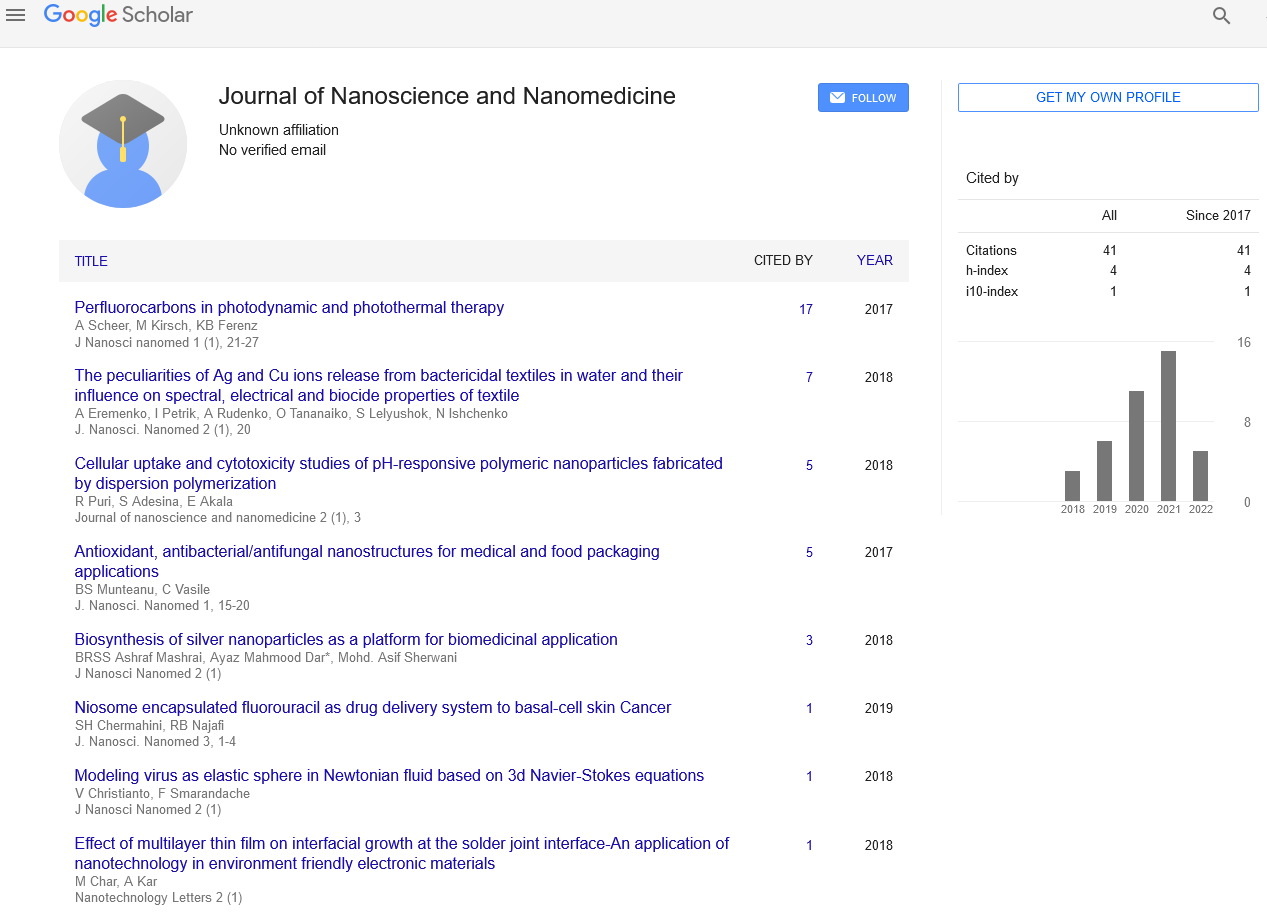A Short Commentary on airborne nanoparticles
Received: 08-Nov-2021 Accepted Date: Nov 21, 2021; Published: 27-Nov-2021, DOI: 10.37532/puljnn.21.5(6).06
Citation: Hyun J. A Short Commentary on airborne nanoparticles. J Nanosci Nanomed 2021;5(6):7-8.
This open-access article is distributed under the terms of the Creative Commons Attribution Non-Commercial License (CC BY-NC) (http://creativecommons.org/licenses/by-nc/4.0/), which permits reuse, distribution and reproduction of the article, provided that the original work is properly cited and the reuse is restricted to noncommercial purposes. For commercial reuse, contact reprints@pulsus.com
Hearing the words “airborne nanoparticles” for the primary time, one would likely inquire: fair how minor are they, where do they come from, and do we got to stress around them? These modest particles between 1 and 100nm are around 700 to 70,000 times more slender than the distance across of normal human hair. Nanoparticles are omnipresent within the climate. One of their key characteristics is that they have exceptionally small mass, but are numerous in number. And it is for this reason that the current around the world, mass–based, surrounding discuss quality directions for particulate matter are incapable in managing with nanoparticle [1].
Where do they come from? Nanoparticles enter the environment from a assortment of sources that incorporate characteristic, coincidental and fabricated forms. Street vehicles are the most offender, contributing up to 90% of the full in contaminated situations such as active streets. Thus the discuss in such situations contain tens of thousands of these particles. City tenants will for the most part breathe in around 10-80 billion nanoparticles each hour on active courses. The Euro 5 and Euro 6 outflow benchmarks are the primary ever for diesel vehicles that confine the emissions of molecule numbers within the European Union. Diminishment of sulfur substance in diesel fuel has brought down nanoparticle levels in European cities, as has more extensive utilize of diesel particulate channels. Such measures are likely to decrease the sum of nanoparticles from street vehicles, but the commitment from non-vehicle sources, such as wood and coal burning, may ended up more articulated in future [2].
What are the effects? Nanoparticles have great affect on worldwide climate as restricted to human wellbeing. Not at all like their bigger measured sediment particles (dark carbon), nanoparticles can be enacted as cloud beads. Tall concentrations of these beads increment the extent of sun oriented radiation reflected back to space, causing a cooling impact on climate. The human body is an amazing surgeon for itself. The lungs breathe out a great extent of micron-sized particles (1,000 times greater than nanoparticles), and can remove a certain amount of nanoparticles as well. But long exposures to tall concentrations of nanoparticles brings a number of antagonistic wellbeing impacts such as lung issues, and cardiovascular disease. One of the key reasons for their negative wellbeing affect is their poisonous quality and expansive add up to surface range per unit mass, compared with micron measure particles. For case, on the off chance that we take one gram mass of a fabric to create round particles of 1μm and 1nm distance across. The surface region of 1nm particles will be around 1000 times higher than those of 1μm molecule. This increments their potential chemical reactivity and capacity to be ingested. They can pass profound into the respiratory framework, responding with the lung tissues and potentially entering the blood stream. Usually not an issue with particles of a bigger, micrometre measure, which cannot pass through cell films [3].
There are right now no discuss quality directions in any portion of the world to control introduction to nanoparticles, for various reasons. For occurrence, what the secure level of nanoparticle introduction could be is still disagreeable. There’s moreover a need of standard estimation procedures or instruments. Another specialized challenge to complicate any future control is our deficiently information of the physical and chemical characteristics of nanoparticles from modern sources, for illustration those delivered by vehicles run on bio-fuels. Whereas the utilize of biofuels in street vehicles has been found to decrease emanations of carbon emissions and the mass of particulates, prove recommends an increment within the number of molecule outflows.
Information on the toxicological character of nanoparticles from biofuels is restricted. There are significant endeavors to control open presentation through controlling discuss quality. The science encompassing their conduct, estimation, scattering, wellbeing and natural affect has moved forward obviously over the past decade. With the striking later headway of measuring rebellious it is presently conceivable to degree barometrical particles down to 1nm. But there are still number of specialized obstacles to be crossed some time recently any across the nation administrative system can be put into hone [4].
REFERENCES
- Donaldson K, Li XY, MacNee W. Ultrafine (nanometer) particle mediated lung injury. J Aerosol Sci. 1998;29(5–6):553–60.
- Fissan H, Neumann S, Trampe A. Rationale and principle of an instrument measuring lung deposited nanoparticle surface area. J Nanopart Res. 2007;9(1):53–9.
- Jung H, Kittelson DB. Characterization of aerosol surface instruments in the transition regime. Aerosol Sci Technol. 2005;39:902–911.
- Shosaku K. Distribution of nanoparticles in the see-through medaka. Environ Health Perspect. 2006;114(11):1697–1702.





